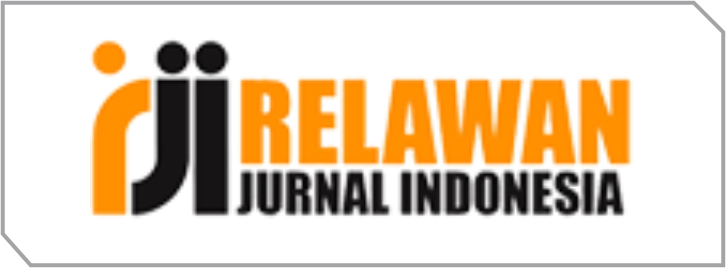The Interplay of Content Marketing and Brand Awareness in Driving TikTok Shop Purchases
DOI:
https://doi.org/10.53748/jbms.v4i1.88Keywords:
Content Marketing, Brand Awareness, Tiktok Shop, Purchase Intention, Quantitative AnalysisAbstract
Objective This study aims to analyze the effect of content marketing and brand awareness of TikTok Shop on purchase intention. Methodology This research uses quantitative methods with a quantitative descriptive analysis approach. The type of research is explanatory research which aims to explain the relationship between research variables. The research population is all TikTok Shop users in DKI Jakarta aged 17-30. Samples were taken randomly from the population. Data collection was carried out through an online survey using Google Forms. Findings The findings demonstrated that purchase intention is positively and significantly impacted by content marketing and brand awareness. Given that brand recognition has a higher coefficient value than content marketing, it has to be given greater priority. Novelty The study examines the combined effect of content marketing and brand awareness on purchase intention. This combination of variables provides a more comprehensive understanding of how these factors interact to influence consumer behavior.
Downloads
References
Aaker, D. (2016). Manajemen Pemasaran Strategi (8th ed.). Salemba Empat.
Abidin, C. (2021). Mapping internet celebrity on TikTok: Exploring attention economies and visibility labours. Cultural Science Journal, 12(1), 77–103.
Affandi, D., & Wijayani, I. (2022). Social media as self-existence in students using TikTok applications. Da’watuna: Journal of Communication and Islamic Broadcasting, 2(3), 300–311.
Ansari, S., Ansari, G., Ghori, M. U., & Kazi, A. G. (2019). The impact of brand awareness and social media content marketing on consumer purchase decision. Journal of Public Value and Administrative Insight, 2(2), 5–10.
Bhandari, A., & Bimo, S. (2022). Why’s everyone on TikTok now? The algorithmized self and the future of self-making on social media. Social Media + Society, 8(1), 1–11.
Dahniar, S., Anugra, W., Sakinah, A., Febrianti, W., & Hasan, M. (2023). Utilization of TikTok Shop interactive features and their impact on consumer purchasing decisions. International Journal of Asian Business and Management, 2(6), 947–960.
Hair, J. F., Anderson, R. E., Tatham, R. L., & Black, W. C. (2019). Multivariate Data Analysis (7th ed., Vol. 87, Issue 4). Prentice Hall.
Hussin, K., & Hishan, S. S. (2022). The implementation of brand awareness strategies to attract new customers to the company. International Journal of Academic Research in Business and Social Sciences, 12(1), 1534–1552.
Indrawati, Yones, P. C. P., & Muthaiyah, S. (2023). eWOM via the TikTok application and its influence on the purchase intention of Somethinc products. Asia Pacific Management Review, 28(2), 174–184.
Kang, H., & Lou, C. (2022). AI agency vs. human agency: Understanding human-AI interactions on TikTok and their implications for user engagement. Journal of Computer-Mediated Communication, 27(5), 1–13.
Kee, A. W. A., & Yazdanifard, R. (2015). The review of content marketing as a new trend in marketing practices. International Journal of Management, Accounting and Economics, 2(9), 1055–1064.
Kotler, P., & Keller, K. L. (2016). Marketing Management. Pearson Education Limited.
Kramer, V., & Krafft, M. (2023). When and how information and communication technology orientation affects salespeople’s role stress: The interplay of salesperson characteristics and environmental complexity. European Journal of Marketing, 57(3), 659–682.
Oktiani, A., & Khadafi, R. (2018). Pengaruh brand awareness dan brand image serta word of mouth terhadap brand trust dan pembentukan brand loyalty pada pelanggan C’bezt Friedchiken Kecamatan Genteng Banyuwangi. Journal of Economic, Business and Accounting (COSTING), 1(2), 269–282.
Ondang, J. P. (2015). Influence of perceived value and attitude toward consumer purchase intention to Billy Coffee House customer at Mega Smart area Manado. Jurnal Berkala Ilmiah Efisiensi, 15(5), 800–807.
Schiffman, L. G., & Kanuk, L. L. (2007). Consumer Behavior. Pearson Prentice Hall.
Siahaan, H. D., & Yuliati, A. L. (2016). Pengaruh tingkat brand awareness terhadap keputusan pembelian produk Victoria’s Secret (studi pada konsumen di PVJ Bandung).
Steimle, J. (2014). What is content marketing? Forbes. https://www.forbes.com/sites/joshsteimle/2014/09/19/what-is-content-marketing/
Sucahyo, Y. A. (2017). Pengaruh brand association, brand loyalty, brand awareness, dan brand image terhadap brand equity pada brand Happy Baby. PERFORMA: Jurnal Manajemen dan Start-Up, 2(5), 601–610.
Sugiyono. (2015). Metode penelitian kuantitatif, kualitatif dan kombinasi (mixed methods). Alfabeta.
Vinerean, S. (2017). Content marketing strategy: Definition, objectives and tactics. Expert Journal of Marketing, 5(2), 92–98.
Wardani, R., Rasidi, Widia, A., Cahya, F., Aisyah, D., Nafisah, D., & Khaira, M. (2024). Content marketing strategies in increasing consumer interactions with social media users. Proceeding of International Conference on Education, Society and Humanity, 2(1), 1209–1217.
Wismiarsi, T., Pangaribuan, C. H., Prayitno, S. B., & Ainin, A. Q. (2024). The influences of content interactivity on purchase intention: An engagement mediation. Multidisciplinary Science Journal, 6(7), 1–10.
Zhafira, A. N., & Ida Nurcahyani. (2021). TikTok kenalkan fitur TikTok Shop bareng Nagita Slavina. Antaranews. https://www.antaranews.com/berita/2106154/tiktok-kenalkan-fitur-tiktok-shop-bareng-nagita-slavina
Downloads
Published
How to Cite
Issue
Section
License
Copyright (c) 2024 Journal of Business, Management, and Social Studies

This work is licensed under a Creative Commons Attribution 4.0 International License.
Authors retain copyright and grant the journal right of first publication with the work simultaneously licensed under a Creative Commons Attribution 4.0 (CC 4.0) that allows others to share the work with an acknowledgment of the work's authorship and initial publication in this journal.


















